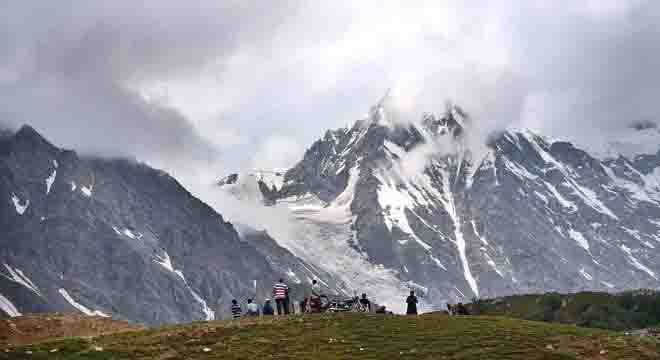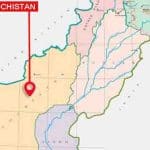ISLAMABAD, The two new high-altitude national parks of Nanga Parbat and Himalaya being inaugurated by Prime Minister Imran Khan in Gilgit Baltistan (GB) under his Protected Areas Initiative will boost adventure tourism, sustainable employment opportunities for local communities and ecosystem restoration.
The newly launched national parks were sprawling over an area of 3,600 square kilometers that comprised of five percent of the total area of GB, told APP an official of the Ministry of Climate Change.
He said these national parks owing to their unique geographical location and topography had exotic species of flora and fauna making the region a heaven of various natural organisms belonging to animal, plant and bird life species.
“Nanga Parbat and Himalaya National Parks will serve as a nature corridor among Khyber Pakhtunkhwa, GB and Azad Jammu and Kashmir where the wildlife and birds species will have an unimpeded migration and displacement places to create their habitats with changing weather patterns and ecological conditions,” he added.
These national parks, he said included rare wildlife and plant species including the snow leopard, Ladakh Arial, Markhor, Blue Sheep and Brown Bear where wildlife photographers would have ample opportunities to capture one of the rarest visuals of wild animals living in oblivion.
“A recent video tweeted by SAPM Malik Amin Aslam showing a thriving herd of Markhors on Silk Route went viral on social media and similar one was of Snow Leopard which was captured after numerous strides by the photographers.
All such activities will help project the neglected wildlife and biodiversity potential of Pakistan and also increase awareness among the masses to take ownership of this pristine natural reserve facing risk of extinction due to irresponsible attitude of humans and environmental degradation,” he underscored.
The Prime Minister had inaugurated these protected areas with the aim to convert many potential biodiversity sires as national parks so that better management and conservation of natural resources could be ensured.
“Another aspect has been to limit human interventions and encroachments in natural forests as if human settlements left unabated to grow then it would become impossible to reserve the damage faced in terms of ecological losses,” the Ministry of Climate Change warned.
In 2018, there were 30 national parks existing in the country whereas in the last two years, the number of national parks in all provinces had been increased up to 50 percent. All of these national parks would be administered by the local communities as an income associated opportunity would also enhance community interest and sense of ownership to keep the area safe from encroachments, wild fires, poaching and illegal hunting, he said.
“The Prime Minister has also approved the National Parks Service, which will create about 5,000 green jobs for young people.”
The concept, he said of “National Parks” or “Protected Areas” was introduced globally in the 18th century to protect nature against the negative effects of climate change and to protect forests and rare wildlife species whereas at that time the world’s population was very limited.
In Pakistan the Margalla National Park in Islamabad and the Khunjerab National Park in Gilgit-Baltistan were established in 1975 on the basis of the same concept, and probably the main purpose of presenting this concept was to save the earth and environment from careless attitude and behavior of human beings.
Ali Ahmad Jan a well-known Gilgit-Baltistan columnist and Wildlife expert said that to protect our earth and environment from unwanted human activities each country should declare a portion (4 percent) of its total area as protected (territory).
At present, there were 45 national parks in Pakistan and more than half a dozen of them are in Gilgit-Baltistan.
Shabina Faraz a senior environmental journalist writes in her article, “Pakistan has been among the top 10 countries most affected due to climate change for the last 10 years and this year it has reached at the 5th position from previous 8th level. “Only a strong ecosystem can stop the scourge of climate change,” said Shabina adding that only a thriving environment could be the foundation of a stable economy.
There were several types of “protected areas” in the world, including a safe area where only scientific research could take place whereas another one was a safe area where tourism was allowed, but not population or settlement and other included areas where the local population was allowed limited activities with strict conditions.
Practical steps regarding the National Parks in Gilgit-Baltistan were taken since 1975, when after the completion of the Karakoram Highway, voices began to rise around the world regarding the protection of “rare wildlife” facing decline. The then Prime Minister of Pakistan Zulfiqar Ali Bhutto realizing the frailty of the situation, established “Khunjerab National Park”. Since then, various governments have created about half a dozen national parks in Gilgit-Baltistan.
The inauguration of two new national parks in Gilgit-Baltistan by Prime Minister Imran Khan depicts his commitment to protect natural environment of this beautiful region.
Follow the PNI Facebook page for the latest news and updates.








